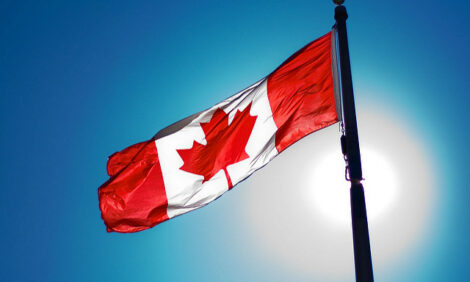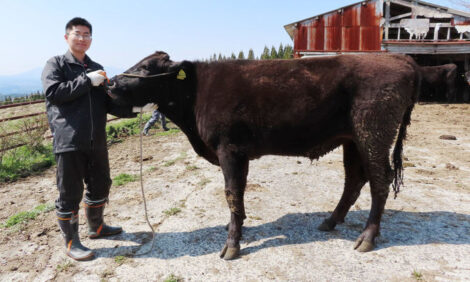



Cold Snap Could Warrant Warm Baths For Newborns
US - Warm baths have been proven to rescue calf temperatures quicker than heatlamps, an Oklahoma veterinarian has reminded dairy farmers.The New Year has brought a record breaking cold snap across the northern US, centering on the Mid West, where air temperatures have been as low as – 27 degrees centigrade (- 17 F).
The widespread freeze, exacerbated considerably by wind-chill, resulted in Indiana and Indianapolis state governments temporarily banning driving and has resulted in timely calf health reminders for farmers.
Dr Glenn Selk of Oklahoma State University advises that a bath of warm water at 37.7 degrees centigrade (100 F) can be useful for recovering extremely hypothermic calves.
This has been seen to work onfarm in Oklahoma and was evaluated in the 1980s by Canadian researchers Robinson and Young, Alberta University, in a paper which appeared in the Journal of Animal Science.
“Heat production and rectal temperature were measured in 19 newborn calves during hypothermia and recovery when four different means of assistance were provided,” said Dr Selk.
Extreme hypothermia was recorded in the calves of 30 degrees C (86 F) before warming was initiated by infrared heat lamps, adding thermal insulation or warm water immersion.
Calves given a bath returned to normal rectal temperature (103 F) half an hour sooner than the other calves, taking 63 minutes as opposed to 90 and above.
After bathing, calves should be properly dried before being placed back in pens, Dr Selk advised.
“Time honored methods such as drying the calf off with the gunny sack and then putting them under a heat lamp or in the floorboard of the pickup cab will still be helpful to many calves born in cold weather.
“These methods may not re-warm the calf as quickly or be quite as effective for the severe case of hypothermia.”
As well as severity, the distinction between gradual and acute hypothermia has been described by Extension Veterinarian Tracey Renelt this week.
She outlined exposure (gradual) hypothermia as a steady loss of body heat, whereas immersion (acute) hypothermia is rapid loss, often due to a wet coat.
“Hypothermia is something that we need to be concerned about, especially this time of year,” said Mrs Renelt.
She said that dairy calves are slightly different to most beef breeds regarding temperature thresholds.
Mild hypothermia approximately occurs at below 101.5 F in dairy calves and 100 F in beef breeds, she explained.
She also highlighted the importance of clean towels; thermometers and colostrum in January, heading towards the calving season.
"The use of the thermometer is essential to determine the degree of hypothermia," said Mrs Renelt.
She explained: "Often a calf does not appear to be hypothermic, however upon taking its temperature, you find that the calf's body temperature is below normal."
The condition is linked to dystocia, which often bring hypothermia. Mrs Renelt explained the calf can be put in a hypoxic sitaution (oxygen shortage).
She said: "The calf being hypoxic, is slow to dry off and nurse, which allows hypothermia to set in."
Michael Priestley
News Team - Editor
Mainly production and market stories on ruminants sector. Works closely with sustainability consultants at FAI Farms



